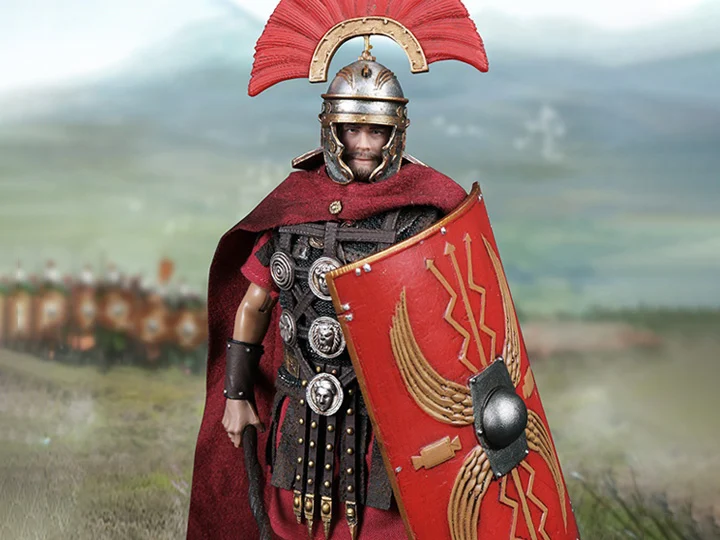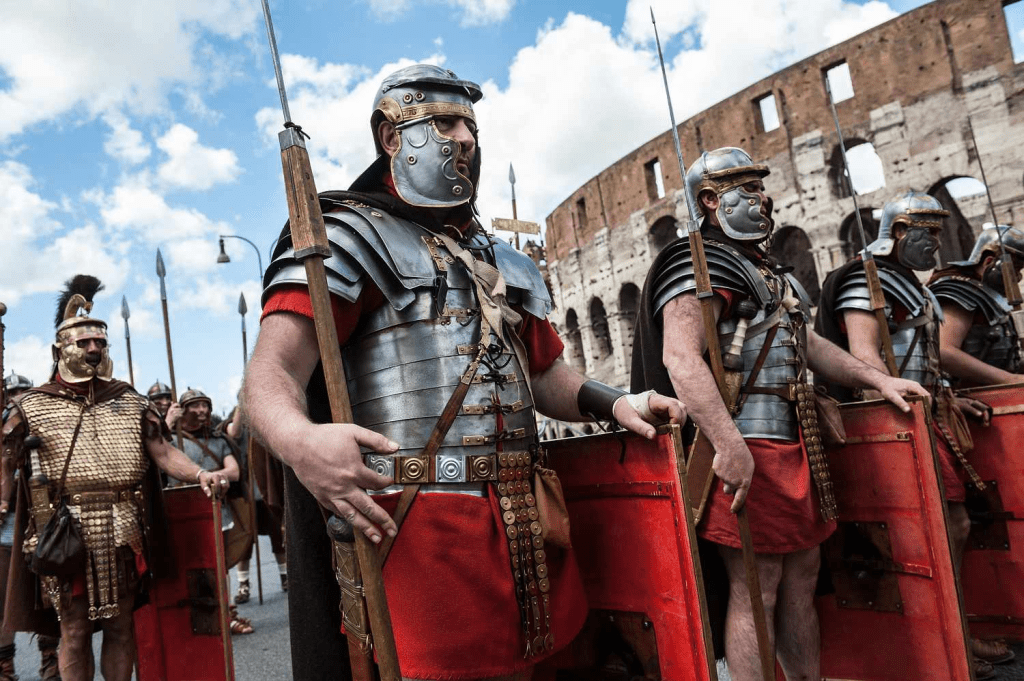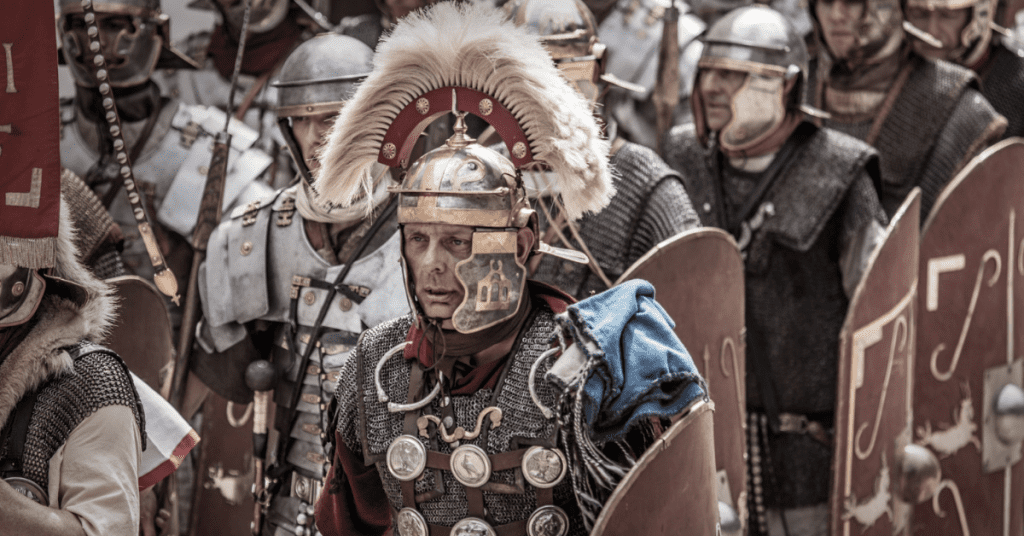What set centurions apart was not just their rank, but how they carried it. These officers didn’t shout orders from safety. They stood in the front line, side by side with their men, often the first to charge and the last to retreat. If a battle was fierce, the centurion was in its thickest part. They earned the respect of their troops not through status, but through shared danger.
This front-line leadership wasn’t just symbolic. It held the Roman formations together in times of chaos, inspiring soldiers by example. When morale wavered, centurions were the anchor.

Double Pay, Double Burden
To reflect their responsibilities and risks centurions received double the pay of regular legionaries. But the extra coin wasn’t just a reward. It came with expectations. They were responsible for maintaining order in the camp, ensuring drills were followed, and enforcing strict military discipline.
And in Rome, discipline was no joke.
Video:
What is a Roman Centurion?
The Vitis: A Symbol of Authority and Control
Every centurion carried a short staff made from grapevine wood, known as a vitis. More than just a badge of office, it was a tool of enforcement. If a soldier stepped out of line, the vitis came down hard literally. Centurions were known to use it on their own men to uphold order. Brutal? Yes. Effective? Without a doubt.
But the vitis also symbolized something deeper: responsibility. Centurions had to keep their units sharp, alert, and loyal. Discipline wasn’t cruelty it was survival.

Centurions as the Glue of the Legion
While generals strategized and emperors claimed glory, it was the centurions who held the army together. They trained recruits, managed supplies, organized construction during peacetime, and handled military justice. They were the mentors, managers, and enforcers of the Roman war machine.
And in times of war, their presence often turned the tide.
Video:
The Centurion: Backbone of the Roman Army DOCUMENTARY
A Legacy That Still Echoes
Today, the term “centurion” echoes in history as a symbol of leadership earned, not given. In a world ruled by elites, Rome’s centurions reminded everyone that courage, discipline, and loyalty could rise above birthright.
Their story isn’t just one of ancient warfare it’s a timeless lesson in leadership. Earn respect. Lead by example. And never ask of others what you wouldn’t dare do yourself.



